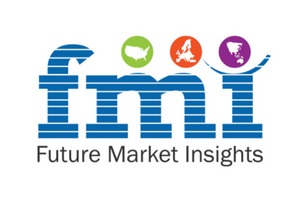North America is projected to account for 24.9% of the global microcrystalline cellulose market share during the forecast period. The microcrystalline cellulose market in Europe is anticipated to command 67.4% of the total market share in 2022.
The global demand for microcrystalline cellulose (MCC), as in line with a currently concluded market examine via destiny marketplace Insights (FMI), is projected to develop at a slight price of four.5 percentage, in 2019. The worldwide quantity income of microcrystalline cellulose is projected to reach approximately 139,899 tons in 2019, generating a revenue of approximately US$ 537.7 Million, for the duration of the equal length.
This has led to the introduction and usage of innovative non-wood-based alternatives made from agricultural waste, thereby augmenting the growth of the market. Backed by the aforementioned factors, the market is projected to expand at a steady 4.7% CAGR, topping US$ 818 Mn in 2028.
| Attribute |
Details |
| Microcrystalline Cellulose Estimated Market Size 2022 |
US$ 619.80 Mn |
| Microcrystalline Cellulose Market Value-based CAGR (2022-2028) |
~4.7% |
| Projected Microcrystalline Cellulose Market Size in 2028 |
US$ 818 Mn |
The outlook for worldwide microcrystalline cellulose market is expected to stay high quality with accelerated business application in a number of quit-use industries, mainly food and drinks industry given the transferring purchaser desire towards healthy and fibrous food.
Request a sample to obtain authentic analysis and comprehensive market insights @ https://www.futuremarketinsights.com/reports/sample/rep-gb-1017
Segmental Analysis Insights
By Application: Substantial Microcrystalline Cellulose Demand Recorded in F&B Industry
- Given its non-toxicity, 99+% dietary fiber and some salts, and most of all biodegradability, pharmaceutical remains the top most application of microcrystalline cellulose—used as a tableting agent. In addition, chemical purity, low reactivity, better disintegrating property, and greater flowability makes microcrystalline cellulose the primary binder in oral suspensions, sprays, and lotions apart from oral tablets and capsule formulations. In terms of application, the pharmaceutical segment dominated the global microcrystalline cellulose demand with about 40 percent market share, by 2018-end.
- However, in the coming years, the demand in food and beverages industry is expected to grow multifold, considering regulatory authorities’ nod to microcrystalline cellulose as an approved food ingredient. The food & beverages segment is estimated to witness robust growth gaining a substantial market share—primarily driven by increasing acceptance of microcrystalline cellulose as bulking and anticaking agent in products such as soups, sauces, and drinks. In addition, microcrystalline cellulose also acts as a as a fat alternative, minus any calorific value. Apart from the Food and Drug Administration, the European Union too has approved microcrystalline cellulose as a thickener, stabilizer or emulsifier under the E-number E460(i) regulation.
- The cosmetics and personal care industry is expected to witness significant demand for microcrystalline cellulose in the coming years, considering its superior absorption capacity with low bulk quality. Moreover, application of microcrystalline cellulose as an alternative to synthetic gels or polymers will drive the product demand.
By Material Type: Wood-Based Microcrystalline Cellulose to Remain Dominant
- Wood-based microcrystalline cellulose is projected to hold a lion’s share, with over 90 percent market share, considering wood remains the most preferred raw material for microcrystalline cellulose production, creating further lucrative opportunities for the manufacturers.
- Although a very miniscule market share, non-wood based microcrystalline cellulose is expected to witness robust growth in the coming years, giving the increasing demand for environmental-friendly and cost-effective processing methods for non-wood based raw materials. However, higher processing cost and lower quality of the final product, will limit the demand for non-wood based microcrystalline cellulose, as per FMI report.
- “Raw materials make up the highest cost in the production of microcrystalline cellulose. These include fibrous materials such as wood pulp, cotton, and mineral acids—account for up to 65 percent of the total product cost. Energy and power account for only 8 percent to 12 percent of the overall production cost. The manufacturers’ margins can rise to more than 15 percent to 20 percent”, explains a senior analyst, while giving the cost-teardown analysis.
Regionally, China Exhibits Significant Demand for Microcrystalline Cellulose
- Expanding urban landscape coupled with steady growth of the pharmaceuticals industry, will push China and India to the fore, while both the regions collectively accounting for more than one-fourth of the market share by 2028-end. Moreover, changing dietary trends (growing inclination towards protein-rich diet) will further fuel microcrystalline cellulose demand in APAC.
- Market for microcrystalline cellulose in India is expected double in terms of value between 2018 and 2028, with an increase in demand in food and beverages industry.
- Western Europe and North America are projected to remain relatively mature markets, exhibiting growth rates of 4.5 percent and 3.2 percent, respectively.
- Latin America microcrystalline cellulose market lies in the high growth low valued region and is expected to follow the same trend, through 2028.
Feel Free to Ask an Analyst @ https://www.futuremarketinsights.com/ask-question/rep-gb-1017
The global microcrystalline cellulose market showcases a moderately fragmented landscape, with tier-1 companies including DowDupont Inc., and Asahi Kasei Corporation showing dominance over approximately 45-50 percent market share. The local, tier-3 manufacturers of microcrystalline cellulose such as Mingtai Chemical Co., Ltd., Accent Microcell Pvt. Ltd, and Sigachi Industries Pvt. Ltd account to nearly 30-35 percent market share, having a relatively stronger hold on the regional geographies, compared to tier-2 manufactures—holding about 10-15 percent market share.
- Key players and research institutions are focusing on improving the quality of the final product using environmental-friendly solvents.
- Market participants are also investing production capacity expansion to meet the growing demand, amidst market consolidation efforts in the global microcrystalline cellulose landscape.
- Players are also focusing on feasibility study and development of distribution networks and efficient supply chains in the microcrystalline cellulose market.
Microcrystalline Cellulose Market by Category
Material:
- Wood-Based
- Non-Wood Based
Applications:
- Food & Beverages
- Pharmaceuticals
- Cosmetics & Personal Care
- Paints & Coatings
